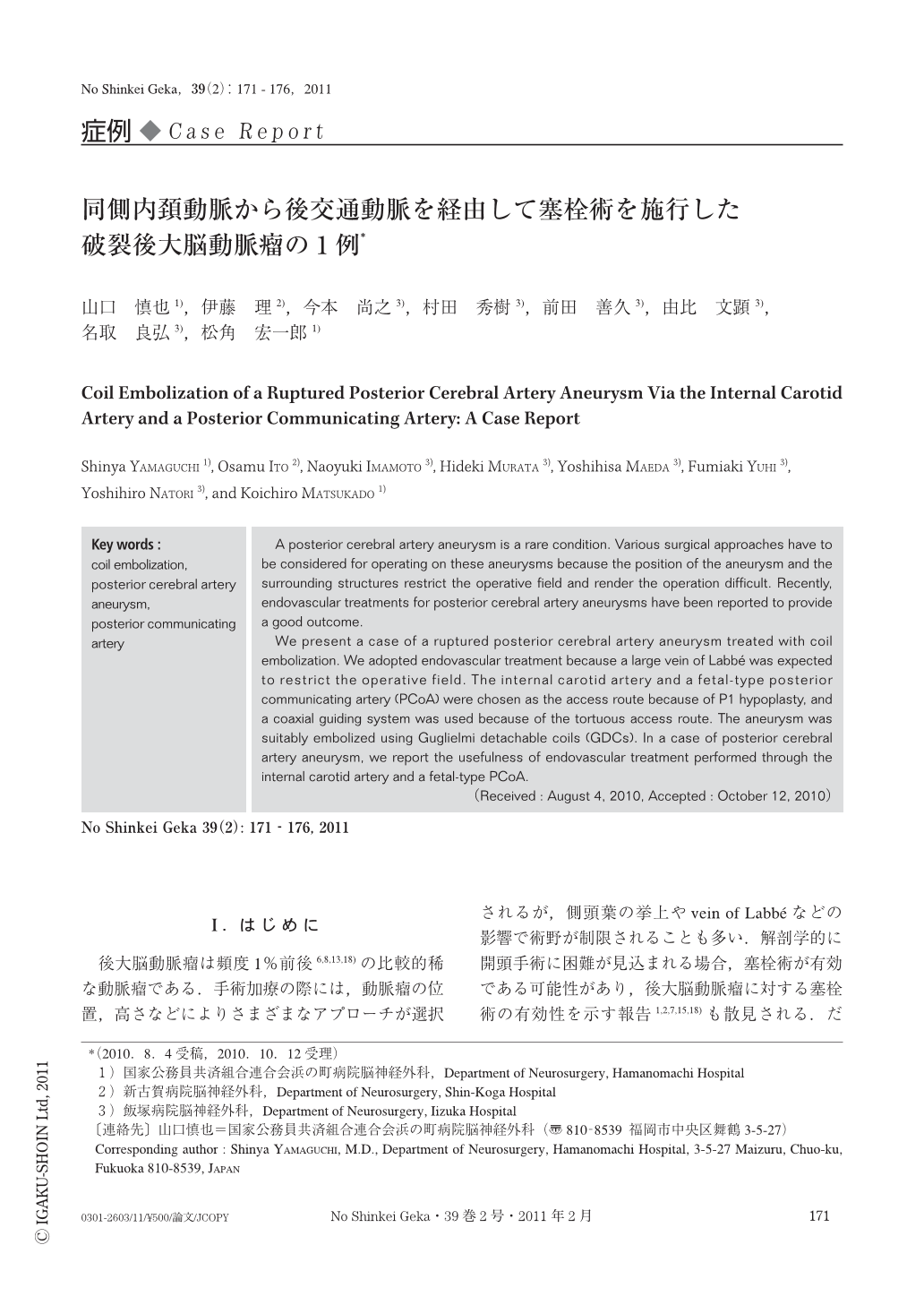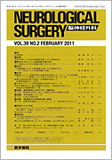Japanese
English
- 有料閲覧
- Abstract 文献概要
- 1ページ目 Look Inside
- 参考文献 Reference
Ⅰ.はじめに
後大脳動脈瘤は頻度1%前後6,8,13,18)の比較的稀な動脈瘤である.手術加療の際には,動脈瘤の位置,高さなどによりさまざまなアプローチが選択されるが,側頭葉の挙上やvein of Labbéなどの影響で術野が制限されることも多い.解剖学的に開頭手術に困難が見込まれる場合,塞栓術が有効である可能性があり,後大脳動脈瘤に対する塞栓術の有効性を示す報告1,2,7,15,18)も散見される.だが,これらの塞栓術はそのほとんどが椎骨脳底動脈をaccess routeとしている.後大脳動脈瘤の塞栓術を検討する際,椎骨脳底動脈系のaccess routeに問題があり後交通動脈(posterior communicating artery:PCoA)が胎児型であった場合は,内頚動脈からPCoAを介した塞栓術が有効であると考えられる.
今回われわれは塞栓術にて加療を行った破裂後大脳動脈瘤を経験した.Vein of Labbéの発達が著明であったため塞栓術を選択したが,動脈瘤proximalのP1がhypoplastyであったため,右内頚動脈からPCoAを介したaccess routeを選択し良好な塞栓術を施行し得た.その有効性や治療の留意点などに関してこれまでの文献考察を加え報告する.
A posterior cerebral artery aneurysm is a rare condition. Various surgical approaches have to be considered for operating on these aneurysms because the position of the aneurysm and the surrounding structures restrict the operative field and render the operation difficult. Recently,endovascular treatments for posterior cerebral artery aneurysms have been reported to provide a good outcome.
We present a case of a ruptured posterior cerebral artery aneurysm treated with coil embolization. We adopted endovascular treatment because a large vein of Labbé was expected to restrict the operative field. The internal carotid artery and a fetal-type posterior communicating artery (PCoA) were chosen as the access route because of P1 hypoplasty,and a coaxial guiding system was used because of the tortuous access route. The aneurysm was suitably embolized using Guglielmi detachable coils (GDCs). In a case of posterior cerebral artery aneurysm,we report the usefulness of endovascular treatment performed through the internal carotid artery and a fetal-type PCoA.

Copyright © 2011, Igaku-Shoin Ltd. All rights reserved.


